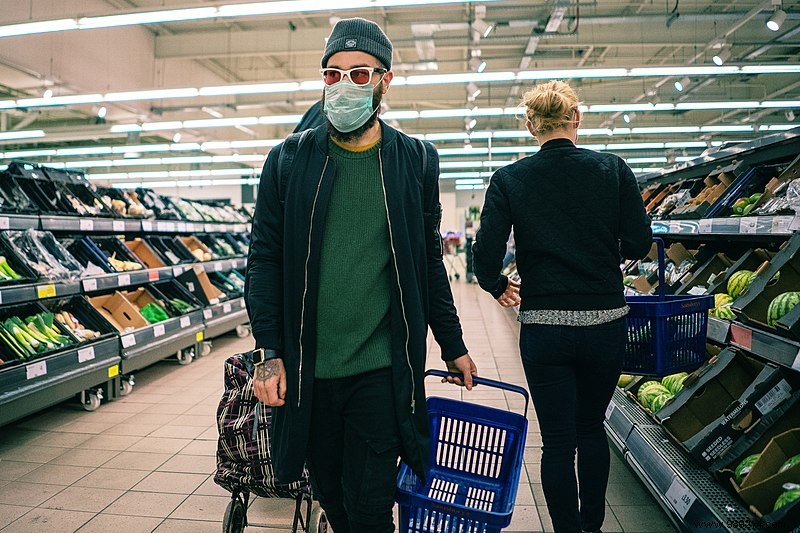Strict compliance with the rules formulated by Covid-19 experts at the start of the pandemic is ancient history. With a fifth wave of contamination in Europe and the appearance of the Omicron variant, should we fear the largesse of many people regarding the handling of their masks?
Almost two years after the appearance of the SARS-CoV-2 coronavirus, it is not uncommon to come across people who have relegated the initial recommendations to the background about wearing a surgical mask. Many do not hesitate to slip their mask around their arm or store it in a pocket or bag while waiting to enter a place. Others clean their used masks with the laundry of the week. And when the mask is indeed worn, it is quite often under the nose.
So should we worry about these liberties taken with the mask? From the spring of 2020, the wearing of the mask was accompanied by strict precautions as to its handling. Indeed, experts had indicated that transmission was through hands and surfaces. Washing your hands before each manipulation was then very important. In fact, airborne transmission is much more effective, making this precaution less useful.

According to Denis Corpet, professor of hygiene and nutrition at the University of Toulouse and member of the scientific collective Adios Corona, the filtration properties of the mask are reduced in the event of humidity. Also, change it after several hours of use is required, especially if talking, coughing, sneezing or sweating. On the other hand, it is not necessarily necessary to throw it away. For the expert, it is possible to dry the mask, for example in a paper envelope, which would allow sufficient decontamination.
As for machine washing, nothing prevents you from washing your masks with other clothes. It is also a form of recycling, at a time when masks are a real scourge for the environment. For Philippe Cinquin, scientific coordinator of the Grenoble University Hospital Clinical Investigation Center, it is quite possible to machine wash your masks at 40°C for half an hour before letting them air dry. In the end, this would cause a loss of only 10% of the filtration capacity of the mask.
Nevertheless, some recommendations on wearing a mask are still very relevant, the main interest being to greatly reduce the projection of potentially infected aerosols. For example, avoid crossing rubber bands while wearing your mask. Otherwise, he will tend to yawn sideways. You also need to adjust the nose clip properly to reduce the risk of leakage. Obviously, wearing your mask under your nose has always been and still is an attitude to be banned.
Finally, in terms of preserving the mask between two uses, no method is unanimous , whether it's worn around the arm or stored in a pocket or bag. In reality, the main thing is to avoid damaging the mask, or even tearing it. Some uncertainties persist however, and this is no coincidence, real-life studies are rather rare.